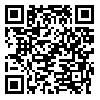Volume 64, Issue 9 (1 2006)
Tehran Univ Med J 2006, 64(9): 65-71 |
Back to browse issues page
Download citation:
BibTeX | RIS | EndNote | Medlars | ProCite | Reference Manager | RefWorks
Send citation to:



BibTeX | RIS | EndNote | Medlars | ProCite | Reference Manager | RefWorks
Send citation to:
Ahmadi B, Alimohamadian M, Mahmoodi M. Polypharmacy among older adults in Tehran. Tehran Univ Med J 2006; 64 (9) :65-71
URL: http://tumj.tums.ac.ir/article-1-902-en.html
URL: http://tumj.tums.ac.ir/article-1-902-en.html
Abstract: (5576 Views)
Background: Multiple drug use is frequently considered to be hazardous for the elderly because of their greater vulnerability to the complications. The purpose of this study was to determine the prevalence of polypharmacy in Tehran and to assess the relative demographic characteristics of patients.
Methods: In a cross-sectional study 400 persons aging 55 years and older were interviewed in order to determine the presence of polypharmacy (daily intake of three or more drugs). The cases were randomly selected and asked to answer a questionnaire through interview at home. The questionnaire contained questions about all taking drugs, pattern of using each drug and also patients' personal, social and medical history. Chi-square and fisher exact tests and determination of odds ratios were used in order to data analysis.
Results: Medium number of drugs used was 3.4 ± 1.9 in studied cases and %39.6 of cases were exposed to polypharmacy. The prevalence of physician prescribed drug usage was observed to be increased by increasing number of total used drugs in each case (P<0.002). The most commonly used drugs were A.S.A, Atenolol and propranolol and these drugs were prescribed by physician in over than %90 of cases. There was a positive correlations between polypharmacy with referring to multiple physicians (OR=1.96, CI 95%, 1.28-2.98) (P<0.002) and adverse drug reactions (OR=2.44, CI 95%, 1.47-4.05) (P<0.001). Polypharmacy was more prevalent in the age group of 65-75 years (P<0.04) and lower levels of education (P<0.004) and less prevalent in the group with moderate income (P<0.001).
Conclusion: Polypharmacy is common among adults aging 55 years and more in Tehran and is affected by age, education level and economic status.
Methods: In a cross-sectional study 400 persons aging 55 years and older were interviewed in order to determine the presence of polypharmacy (daily intake of three or more drugs). The cases were randomly selected and asked to answer a questionnaire through interview at home. The questionnaire contained questions about all taking drugs, pattern of using each drug and also patients' personal, social and medical history. Chi-square and fisher exact tests and determination of odds ratios were used in order to data analysis.
Results: Medium number of drugs used was 3.4 ± 1.9 in studied cases and %39.6 of cases were exposed to polypharmacy. The prevalence of physician prescribed drug usage was observed to be increased by increasing number of total used drugs in each case (P<0.002). The most commonly used drugs were A.S.A, Atenolol and propranolol and these drugs were prescribed by physician in over than %90 of cases. There was a positive correlations between polypharmacy with referring to multiple physicians (OR=1.96, CI 95%, 1.28-2.98) (P<0.002) and adverse drug reactions (OR=2.44, CI 95%, 1.47-4.05) (P<0.001). Polypharmacy was more prevalent in the age group of 65-75 years (P<0.04) and lower levels of education (P<0.004) and less prevalent in the group with moderate income (P<0.001).
Conclusion: Polypharmacy is common among adults aging 55 years and more in Tehran and is affected by age, education level and economic status.
| Rights and permissions | |
 |
This work is licensed under a Creative Commons Attribution-NonCommercial 4.0 International License. |





